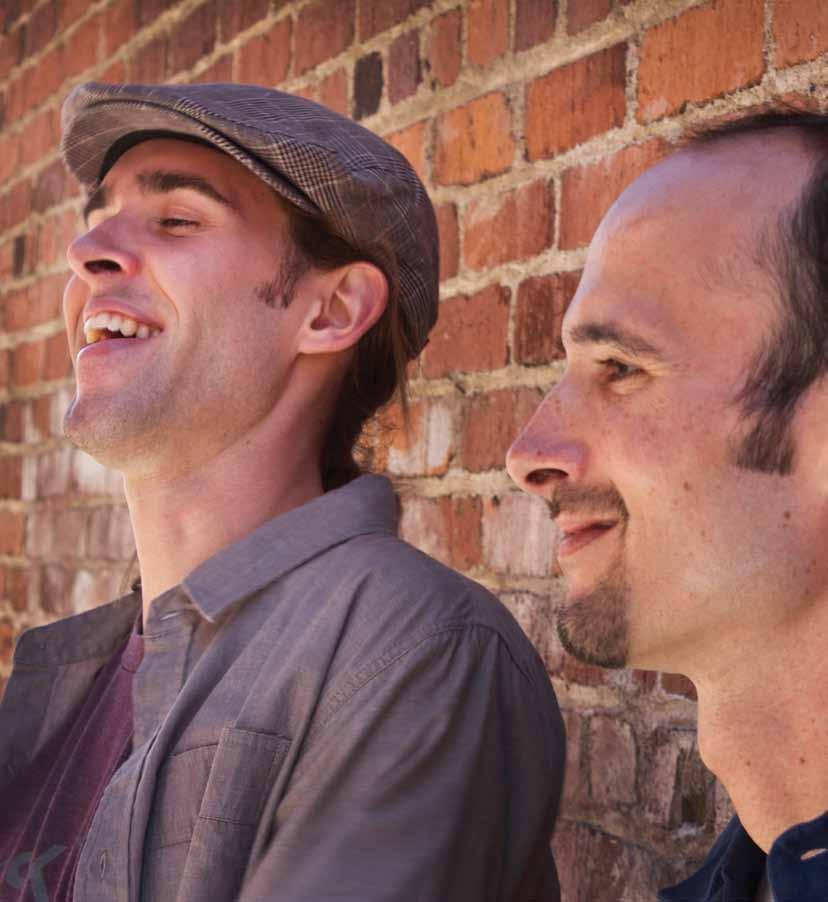
4 minute read
Music
Flowbispo
Launching local talent
go to slolifemagazine.com to listen to the full length version of “Livin’ the SLO Life”
When he was a student at the Cal Poly School of Architecture, Ashley Hendershott could not get the music out of his head. Before long, it was all he could think about. Day and night, he became a slave to the beat. Around the same time, Dylan Harris, who could be found roaming local coffee shops with a notebook in-hand, was dealing with a different, yet equally gripping obsession - for him it was writing poetry.
After a chance meeting last year, the two have been inseparable. Hendershott, who performs under the stage name Ashis Clay, and Harris, together make up the local hip hop group called D&A. Known for their high-energy tempo and upbeat, positive lyrics, their music reflects the clean living culture and style of the Central Coast. But, while the duo loves to perform locally, they do not hesitate to admit to having global ambitions.
Since they began collaborating, Hendershott and Harris have formalized a plan to open a multimedia production facility where their mission is “to promote and showcase local talent to the world.” The name of their new enterprise is Flowbispo, as in creativity flowing from San Luis Obispo. They anticipate casting a wide net at first and expect to take on many varied projects, such as music videos and viral videos optimized for the internet and social media marketing.
Although their background is primarily in hip hop, the pair is looking to record, produce, and collaborate with a wide variety of local artists. Observes Harris, “I’ve got brothers who do Heavy Metal, and I want to do Country Music in the worst way.” Hendershott grew up in both the Bay Area and Southern California rap scenes. He performed with Beat n’ Biscuit Productions where he opened for well-known rappers, including Too Short. He emphasizes that, although their music for the most part is lighthearted and upbeat, it’s important for the art to be pure and true-to-heart, accurately reflecting the reality and perspective of the artist. Says Hendershott, “I love to do positive songs, but I did not come from a positive place. Sometimes my music takes me somewhere else.”
While relatively new to the hip hop genre, Harris, who actually used to poke fun at “the whole hip hop, rap thing” observes that his work with poetry has enabled him to come up with interesting and innovative lyrics to match the music produced by Hendershott. And, Harris, who would remind many of a modern-day beatnik, cites his large personal library as inspiration for much of his wordsmithing. His rhythmic speaking style reflects his writing and is ripe with flowing prose. “SLO is a hopeful metaphor for Earth. There is still suffering and homelessness. And you flip on the news to see horrible things all over the planet. But, what our local musicians often fail to recognize when they are competing with each other is that they are feeding that mentality of separation and conflict and adversity. It always starts on a local level, making those changes that affect the world for the better. We’re taking that perspective of global change starting at home and using it as a foundation for Flowbispo to unite our diverse, local talent.” SLO LIFE




Guateca
Paradigm shifting on a remote Guatemalan hillside
SaN PaBlO the downtown

below eNTHUSIaSM a Cal Poly student shares his optimism
Mike Emrich, founder and president of Solarponics in Atascadero, figures that he has “reached a point in his life where it’s time to give back.” And, while Emrich and his wife, Anna-Louise, a teacher in the Atascadero School District, have found themselves daydreaming about retiring someday and joining the Peace Corps, the couple has found so many other ways to give back today. For example, earlier this year, Emrich had been mentoring a group of Cal Poly students who were preparing to spend the summer in Guatemala to help with the development of San Pablo, which is a small, remote mountain village of approximately 800 people. So, when the faculty leader of the program, Professor Pete Schwartz of the Physics Department, joked with Emrich that “if you want to continue working with us, you’ll have to come to Guatemala.” Emrich leaned back in his chair, thought about it for a few seconds, and said, “Okay, sure.”
The Cal Poly students who are involved in the program are a diverse group, coming from different backgrounds and disciplines. But, the one thing that unites them is that they want to not only help with the development of an impoverished community, they also want to understand what works best. According to Schwartz, who has concentrated most of his research on solar power, “We know that





